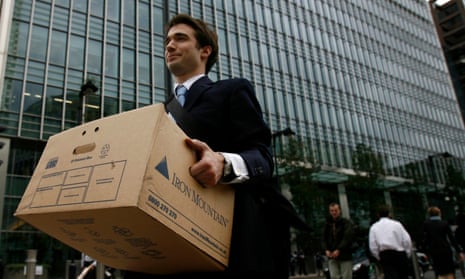Stock markets in turmoil. Nervous investors seeking out safe havens for their money. Rumours swirling about the vulnerability of some of the world’s biggest banks. February 2016 is starting to smell suspiciously like early September 2008 and the days before the collapse of Lehman Brothers.
To be sure, the comparison between now and that September seven-and-a-half years ago, when the global financial crisis came to a head, is not exact. The big banks say they are better equipped to withstand losses now, a view supported by their official regulators. Rising energy prices were squeezing real incomes in the summer of 2008, but today consumers and businesses are getting quite a windfall from the drop in the price of crude.
But there have now been six weeks of unrelenting turmoil in the financial markets since the start of 2016 and the argument that this represents a fleeting spasm of panic before life returns to normal is wearing thin. The sell-off in shares, the collapse in commodity prices and the flight to gold have forced a long overdue reassessment of the sustainability of the uneven recovery that has been under way since spring 2009.
One lesson from those dark days of crisis is that the time to start worrying is when bank bosses feel obliged to insist publicly that their institutions are rock solid.
The story starts with China and the fear that the problems of the world’s second biggest economy mark the third iteration of the global crisis that began in the US in 2007, and subsequently moved to the eurozone in 2010. Like the US, and some peripheral eurozone countries, China pumped up its economic growth using cheap credit and is now finding that many of the loans are going sour. The economy is clearly slowing, with debate over whether China is expanding at close to 7% a year, as the official figures suggest, or a much lower rate. Danny Gabay, who runs the Fathom consultancy, thinks the real rate of growth could be 3% or lower.
Countries that supply commodities – from Angola to Australia – did well out of China’s industrial boom. They could sell all the oil, aluminium, iron ore and copper they could produce at premium prices. Many of these countries – especially the ones that spent and borrowed freely in the expectation that high commodity prices would last forever – now look vulnerable.

So when the sell-off in the markets started in January, the main concern was that the slowdown in China and the crash in commodity prices would have a domino effect on some of the weaker emerging-market economies. That source of anxiety remains, but has now been pushed slightly into the background by speculation about the health of the big European banks.
Four separate factors have come together. Firstly, eurozone banks still have a lot of non-performing loans on their books from the last crisis. Secondly, the belief is that they have lent money for shale oil exploration and high-end property deals that will make losses. Thirdly, weaker growth prospects are hurting profitability. Finally, the increased use of negative interest rates is adding to financial pressures, because it now costs the banks to deposit cash at central banks.
In past economic cycles, central banks had no need for recourse to unconventional tools such as negative interest rates and quantitative easing. The fact that they are still being used seven years after recovery worries investors – and rightly so.
Central banks feel obliged to take action to prevent the deflation caused by China’s slowdown and the big fall in oil prices from becoming entrenched. But some of the unpleasant side effects of QE and ultra-low interest rates are now becoming obvious: QE pumps up asset-price bubbles through its encouragement of reckless lending, while low and negative interest rates add to financial pressures on commercial banks.
To sum up, the past seven-and-a-half years have seen the most colossal use of monetary stimulus in recorded history, yet recovery has been weak by past standards and has been accompanied by a drift towards deflation. As policy becomes ever more unconventional, markets are starting to think central banks have lost control of the situation. The fundamental problems of the pre-crash economy – rising income inequality, over-reliance on debt, weak effective demand – have not been solved: merely papered over.

Comments (…)
Sign in or create your Guardian account to join the discussion